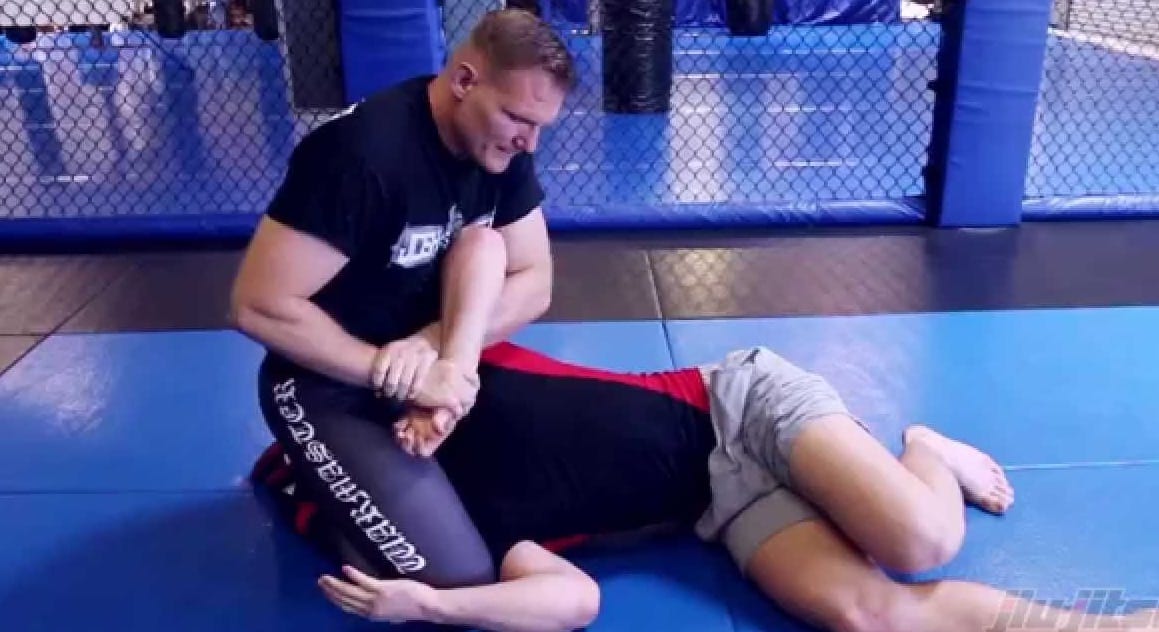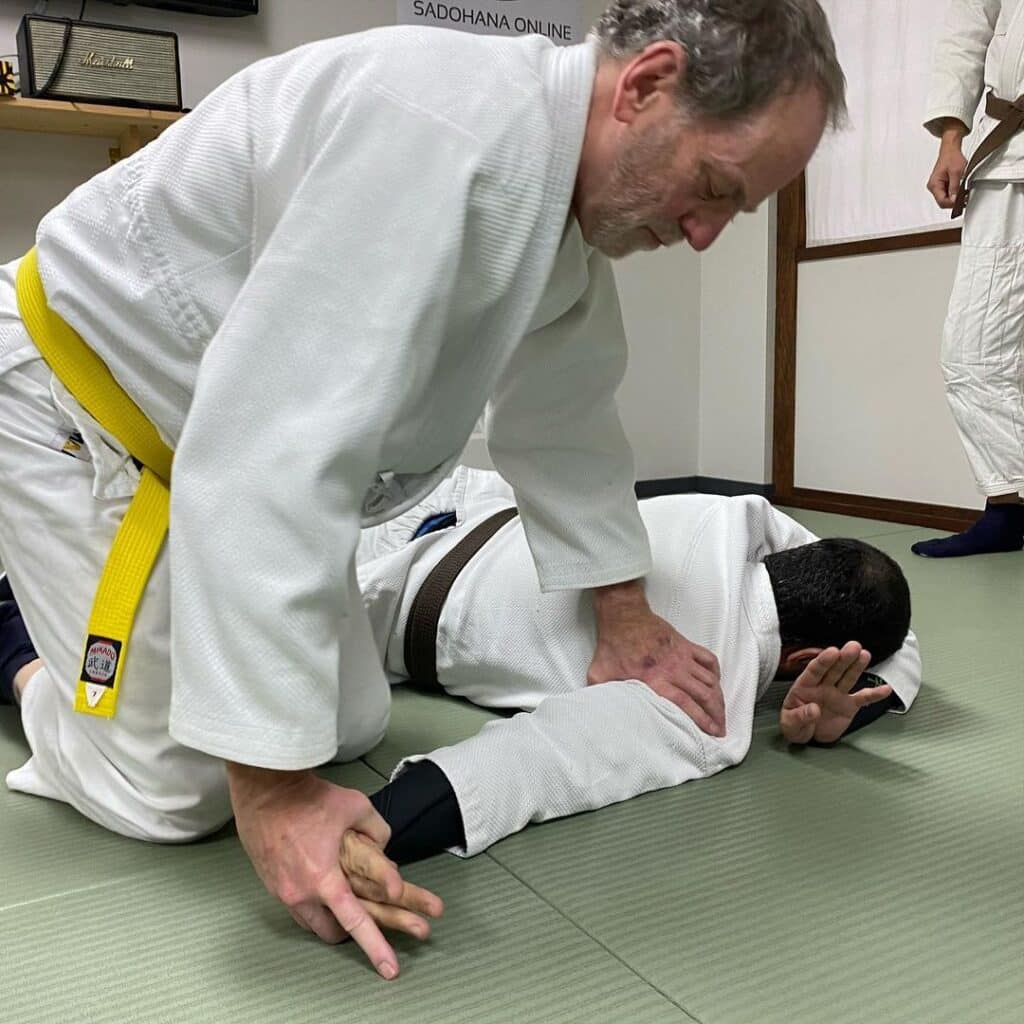Wrist Locks – BJJ Technique Explained

This technique is probably the most despised by grapplers right next to or above heel hooks. It is an extremely painful and annoying submission that can be hit from almost anywhere. We’re talking about wrist locks.
A wrist lock is super efficient and they work on everyone no matter how big they are. Once it’s locked on you only have fractions of a second to tap or possibly get your wrist broken.
Which is why most grapplers hate wrist lockers. So, we’re going to tell you everything about wrist locks in this article. Everything from the history of the move, how it works, various techniques detailed, and tips for landing a wrist lock.

When were wrist locks created?
Wrist locks have been around for quite a long time and used by multiple grappling arts. One place outside of Jiu JItsu, where wrist locks are used quite often is in aikido and hapkido.
These are passive grappling arts that use an attacking opponent’s energy against them. Generally all from standing.
In Portuguese the name they use for wrist lock is mão-de-vaca, which roughly translates to penny pincher. At first wrist locks weren’t really used much in Jiu Jitsu, but practitioners saw the efficiency of the move.
They saw that a wrist lock was open from multiple positions whether if you were standing or on the ground. It has evolved to the point where many grapplers have made wrist locks their specialty. These techniques are simple, yet really painful once you lock them on.
How wrist locks work?
What makes a wrist lock so devastating is the weakness of a human wrist. It is adapted for being flexible allowing your hand to grab, push, pull, and turn things.
Your wrist is made up of ligaments and various small bones that are easy to injure. This is why wrist locks are dangerous. It doesn’t take much pressure to make an opponent tap out.
Once you control an opponent’s, you can bend in various directions to force your opponent to tap. Forcing their wrist forward or backward using two arms against one. Using leverage with just a little pressure can make your opponent submit with the quickness.
Wrist locks from closed guard
There are numerous wrist lock techniques in Jiu Jitsu. Probably too many to list for this breakdown, so we’ll list a few from each position. Starting from closed guard.
What makes closed guard a great position for wrist locks is because the opponent’s wrist is in reach to attack.
The first wrist lock we’ll detail starts when the opponent is pressing their hand against your chest. Put one hand on the opponent’s wrist and the other cupping their tricep. Before you do the wrist like, you’ll have to open your guard and do a little hip escape.
Doing the hip escape is important to put you in place to do the wrist lock. Now that you’re in position, cup their tricep with both hands and push their arm into your chest. The pressure is immediate and your opponent will tap instantly.
Wrist lock #2 is when the opponent grabs your wrist to counter you grabbing their wrist. Start by grabbing the opponent’s 4 fingers with your free hand.
With the hand the opponent is grabbing, you’re going to turn your hand and put your palm to the ceiling. It’s a big elaborate turn that twists the opponent’s hand putting them in position for the wrist lock.
Just grab their wrist and push their hand inward with your grip on the fingers to put on the pressure.
Wrist lock #3 is basically the same as the first technique, but the opponent is grabbing lower to your hip. Start with a small hip escape out and you will already have pressure on their wrist. Just reach over with your free hand to grab their tricep and pull yourself into them for the tap.
The fourth wrist lock is when the opponent is grabbing your belt and pushing it up to set up a pass.
On the same side of the arm you want to attack, reach under that arm and grab your other forearm. That arm you’re grabbing is going to reach over and grab the opponent’s tricep.
Pull their arm across to make a fulcrum. This bends their wrist, so all you have to do is cup their elbow with two hands and pull it in. Be sure to lift your chest up to make this technique work.
For the last wrist lock we’ll detail when the opponent isn’t taking a grip. They just have their hands up defending your grabs.
All you have to do is grab their hand and use your hips to pull them forward. This makes their elbow come to your chest. For the finish just put your free hand on top of your first hand and push down for the tap.
All 5 of these wrist locks are detailed in this video.
Wrist locks from side control
Side control offers a lot of great choices for wrist locks. A lot of the set ups come from when the opponent is defending putting them in place for the submission.
The first one is when the opponent is framing on your neck. Lift your head up and slide it slightly up to pinch their hand in place.
Walk the hand under the opponent’s elbow out and bring your other hand over to cup their elbow. Put your near hand on top of the first hand and drive downward to get the tap.
Our second wrist lock from side control starts when you’re underhooking the opponent’s far arm. This is a bait for them to try and defend by underhooking.
When they try to underhook, swim your arm under and cup their bicep. Their arm is already bent under your armpit.
To keep it in place pinch your shoulder and bicep together. Reach over with your free hand to grab their wrist and lean your weight forward to set in the wrist lock.
Another wrist lock from side control is when the opponent makes the mistake of framing palm up. When you’re in the bottom side mount and do this, you’re basically giving your opponent a wrist lock.
Since their wrist is already bent, all you have to do is take your grips. Cup their elbow with two hands and drive your weight down their wrist for a nasty finish.
Wrist locks from standing
From standing it is very common for an opponent to palm your chest or grab your collar in Gi. With Gi it is very common for the opponent to grab your collar.
When they do this, you’re going to reach across to palm their hand and pull it inward. Pulling it inward keeps the opponent’s arm in place to do your wrist lock. Also pinch your elbow to your body when you control their hand.
With your free hand cup behind the opponent’s elbow. Bend their arm and step in bringing your head/shoulder towards them to close off space.
Now that you’re in place release your hand grip and bring it on top of your elbow grip for the finish.
Other wrist locks
If you’d like to learn more wrist locks here is a video of 37 different wrist locks.
Tips for doing wrist locks
Wrist locks are very simple to pull off, but you have to remember the details. Here are some tips for being more efficient with your wrist locks.
- Wrist control: Obviously wrist control is the first thing you need to have when going for a wrist lock. Grab their hand above their wrist when trying a wrist lock.
- Isolate an arm: Before you go for your wrist lock, you have to isolate an arm and establish control over it. This is really important to remember.
- Use 2 hands: Always go 2 hands on 1 when you’re attacking an opponent’s wrist. 2 hands are always stronger than.
- Elbow control: Most wrist locks also include having elbow control on your opponent. Along with isolating their arm, establish control of the opponent’s elbow.
- Make an angle: When doing wrist locks from guard it is best to take a slight angle. Just going for the wrist list usually won’t work, so you’ll have to set it up.
- Bend the wrist: Every wrist lock involves you bend the opponent’s wrist, so always remember this tip.
- Tap: If you are on the unfortunate end of a wrist lock do yourself a favor and just tap. A wrist lock comes on too fast to try and fight off. Trying to fight a tight wrist lock off will probably end up with you spending some time in rehab.
- Put it on slow: When practicing with teammates always put on wrist locks very slowly. It’s very easy to do damage with one and you won’t have any teammates to train with.






